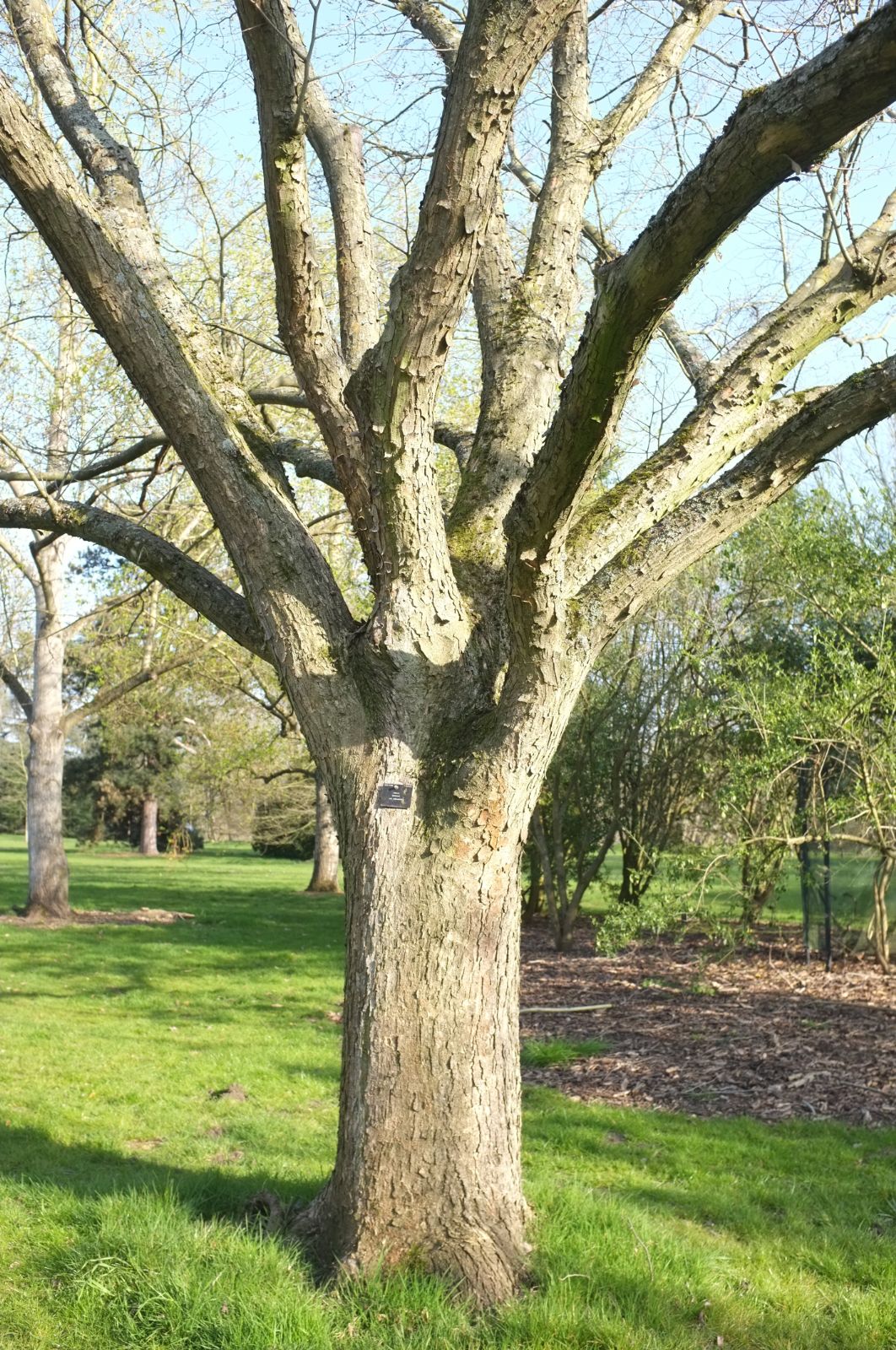Ulmus laciniata
Credits
Article from New Trees by John Grimshaw & Ross Bayton
Recommended citation
'Ulmus laciniata' from the website Trees and Shrubs Online (treesandshrubsonline.
Genus
Common Names
- Manchurian Elm
- Cut-leaf Elm
Other taxa in genus
- Ulmus americana
- Ulmus angustifolia
- Ulmus bergmanniana
- Ulmus campestris
- Ulmus canescens
- Ulmus carpinifolia
- Ulmus castaneifolia
- Ulmus chenmoui
- Ulmus coritana
- Ulmus crassifolia
- Ulmus davidiana
- Ulmus elliptica
- Ulmus gaussenii
- Ulmus glabra
- Ulmus glaucescens
- Ulmus × hollandica
- Ulmus japonica
- Ulmus laevis
- Ulmus lamellosa
- Ulmus macrocarpa
- Ulmus parvifolia
- Ulmus plotii
- Ulmus procera
- Ulmus pumila
- Ulmus rubra
- Ulmus serotina
- Ulmus szechuanica
- Ulmus thomasii
- Ulmus villosa
- Ulmus 'Viminalis'
- Ulmus wallichiana
- Ulmus wilsoniana
Tree to 27 m, 0.5 m dbh. Bark dark greyish brown to grey, longitudinally fissured. Branchlets reddish brown to greyish brown or grey, pubescent when young, no wings. Leaves deciduous, 7–18 × 4–14 cm, obovate to obtriangular, upper surface sparsely hirsute, lower surface pubescent, 10–17 secondary veins on each side of the midrib, margins deeply double-serrate, ciliate, apex truncate or rarely rounded, often with one to three caudate lobes on each side; petiole 0.2–0.5 cm long, pubescent or glabrous. Inflorescences produced on second-year branches; fascicled cymes. Perianth campanulate, five-lobed, margins glabrous to ciliate. Samaras tan or pale green, elliptic to circular, 1.5–2 × 1–1.4 cm, glabrous, perianth persistent; seed positioned in centre or slightly towards the base. Flowering and fruiting April to May (China). Fu & Xin 2000, Fu et al. 2003. Distribution CHINA: Hebei, Heilongjiang, Henan, Jilin, Liaoning, Nei Mongol, Shaanxi, Shandong; JAPAN; NORTH KOREA; RUSSIAN FEDERATION: eastern Siberia; SOUTH KOREA. Habitat Between 700 and 2200 m asl. USDA Hardiness Zone 4–5. Conservation status Not evaluated. Illustration Fu & Xin 2000, Fu et al. 2003; NT889. Cross-references B646, K410.
Ulmus laciniata is a relative of the Wych Elm U. glabra, and could be expected to develop the same large stature, but it is proving to be difficult to grow except in sheltered, humid sites (Heybroek 1993). At the University of Oxford’s Harcourt Arboretum there are several specimens grown from seed received from the Moscow Botanical Garden in 1981, but they are currently only about 3 m tall (P. Newth, pers. comm. 2008). A specimen at the Hillier Gardens planted in an exposed location in 1982 died in 2007. The species shows some resistance to DED, but is very susceptible to the Elm Leafminer (Miller 2000, Smalley & Guries 2000) and Elm Leaf Beetle (Mittempergher & Santini 2004, Sunshine Nursery 2008), so in consequence its usage is very limited. This is regrettable, because the lobed and toothed leaves are extremely striking. They are produced only on vigorous shoots as the growing season progresses. Smalley & Guries (2000) record that there were numerous importations of U. laciniata into the United States from the 1950s onwards, enabling research into its qualities of pest and disease resistance, but it had had a limited presence in cultivation since its introduction to the Arnold Arboretum in 1905. A 1995 accession at the Morton Arboretum, originating in Liaoning Province, was a small bushy specimen 2.5 m tall in 2006.
Although not recognised by Ohwi (1965), a localised form from near Nikko in central Honshu, Japan has been named U. laciniata var. nikkoensis Rehder, and was described by Krüssmann (1986: K410). It too is extremely rare in cultivation, but a tree at the Morton Arboretum grown from a 1984 accession is exceptionally attractive, and looks remarkably like a cherry tree! It was 8–9 m tall in 2006, forming a vase-shaped crown on three principal branches. No insect damage was apparent. The leaves are red on emergence, then slowly fading through bronze to green, and although toothed are not lobed.



